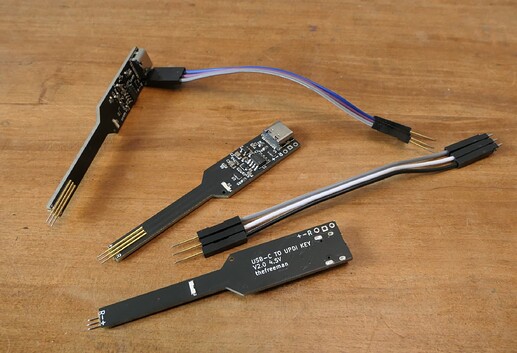Good news : the programmers are in stock again.
This is a new version (V2.0) :
- 4.5V with larger output capacitance for drivers with higher inrush current (e.g. D3AA), while still compatible with a 4.6V max part used in unreleased drivers.
- ESD protected.
- Long narrow profile for unibody lights.
- Additional back LED for better illumination of the driver.
- Staggered header holes for plugging male headers (no soldering required).
Now the flashing kit comprises of :
- the programmer.
- 3 pins male header.
- 3 female to female dupont wires with pogo pins plugged in one end, this allows to flash non standard layout with 2.54mm pitch from Sofirn and Wurkkos.
The not so good news is that the cost of everything has increased since I started selling UPDI programmers back in 2022 : parts, shipping, PayPal fees ( I get more payments from PayPal I don’t want my account to get banned since F&F is against their TOS for selling goods), and taxes. So I’ll increase the price to 14€ shipped, this doesn’t cover the entire cost increase but I don’t really want to go higher.
For payment, additionally to Paypal I started accepting Revolut a while back, which allows paying either from a Revolut account without fees, or directly from a card, since there are no fees on my end the price is lower at 13.2€.
